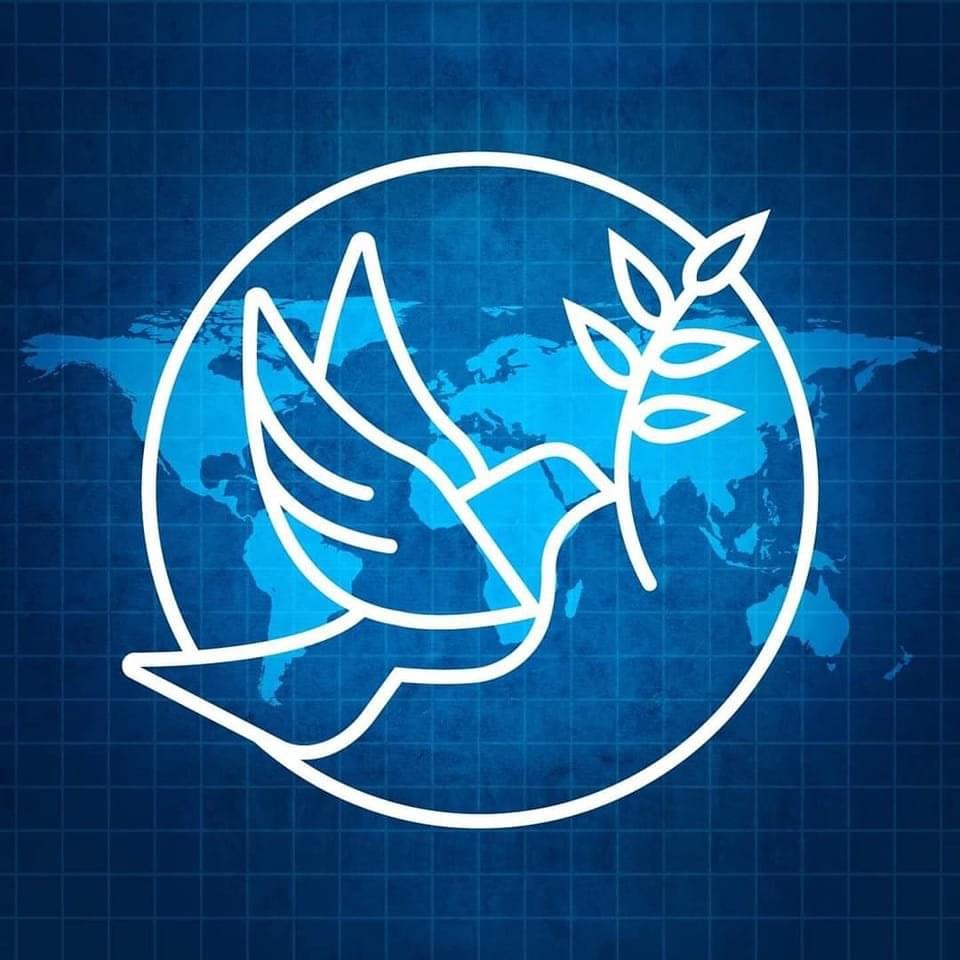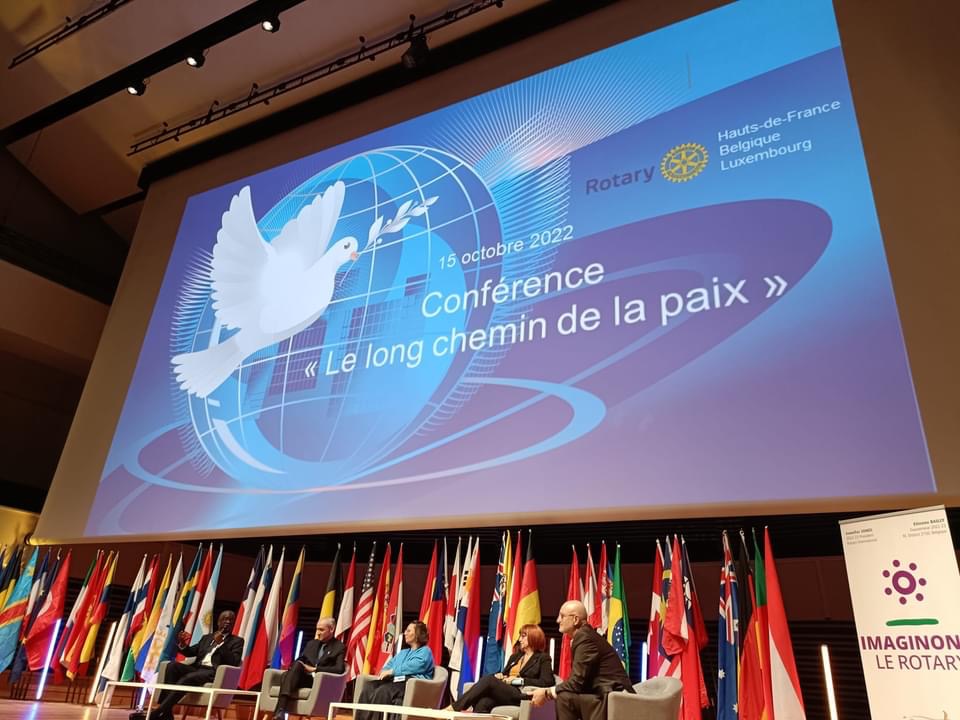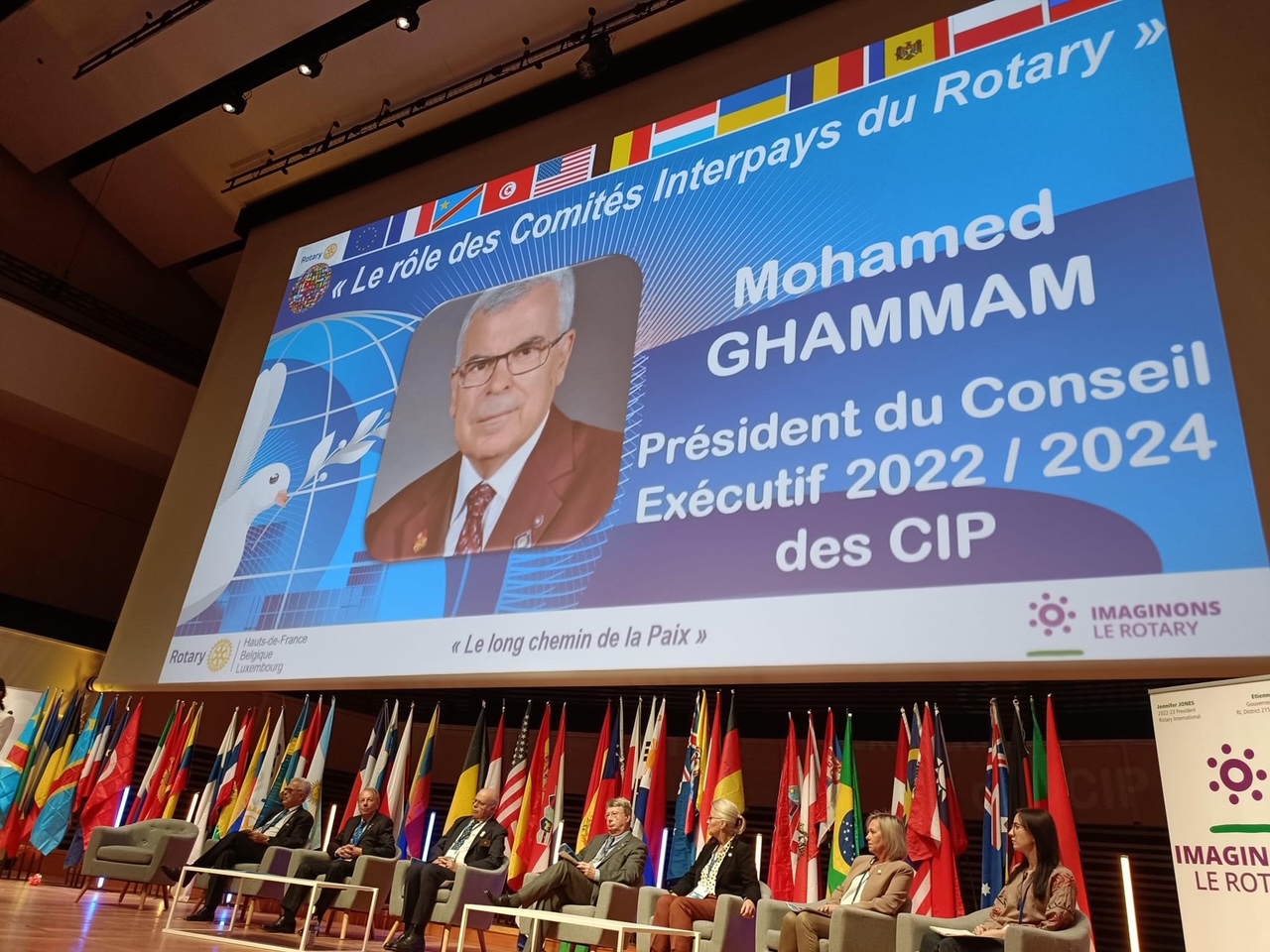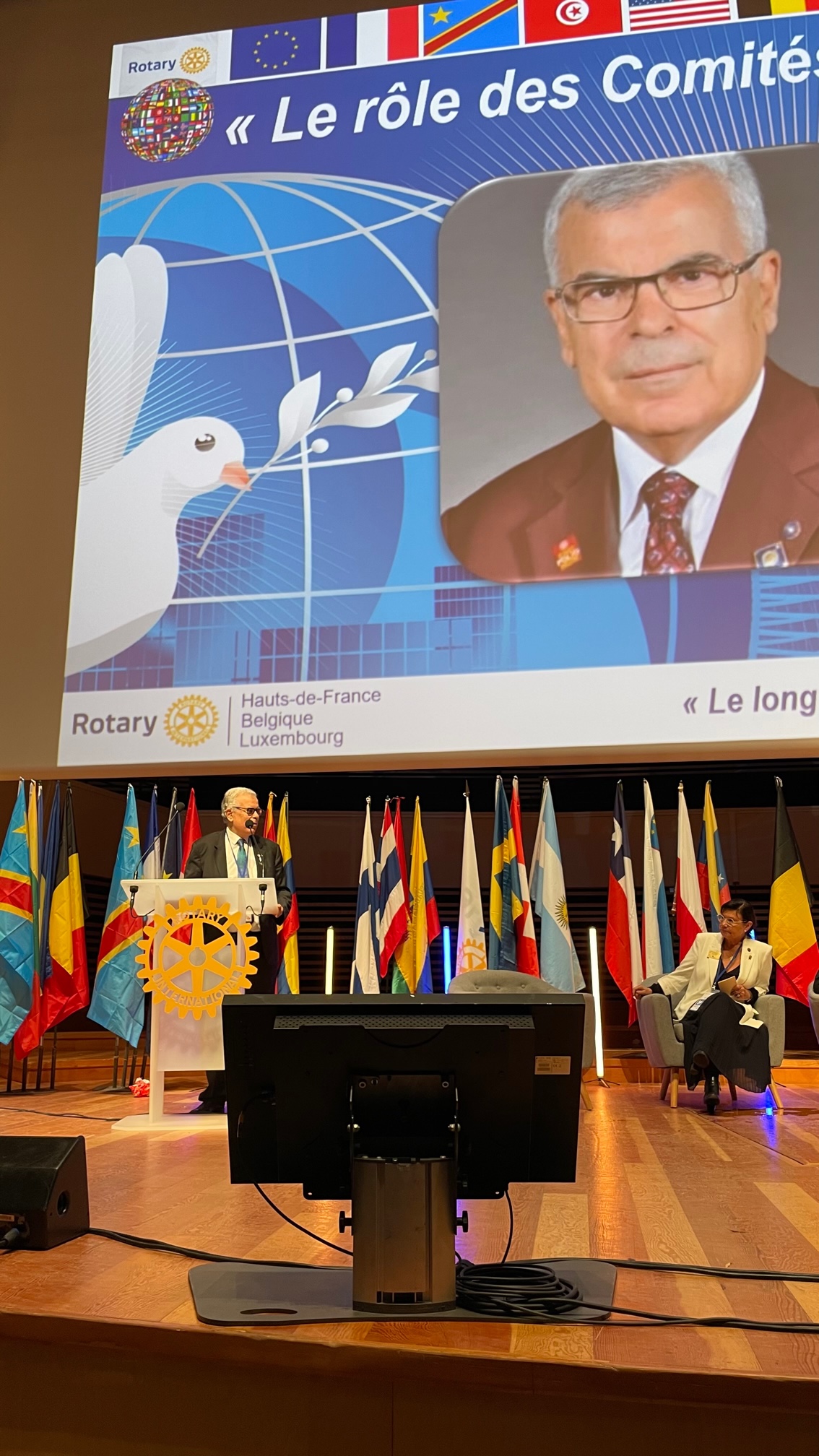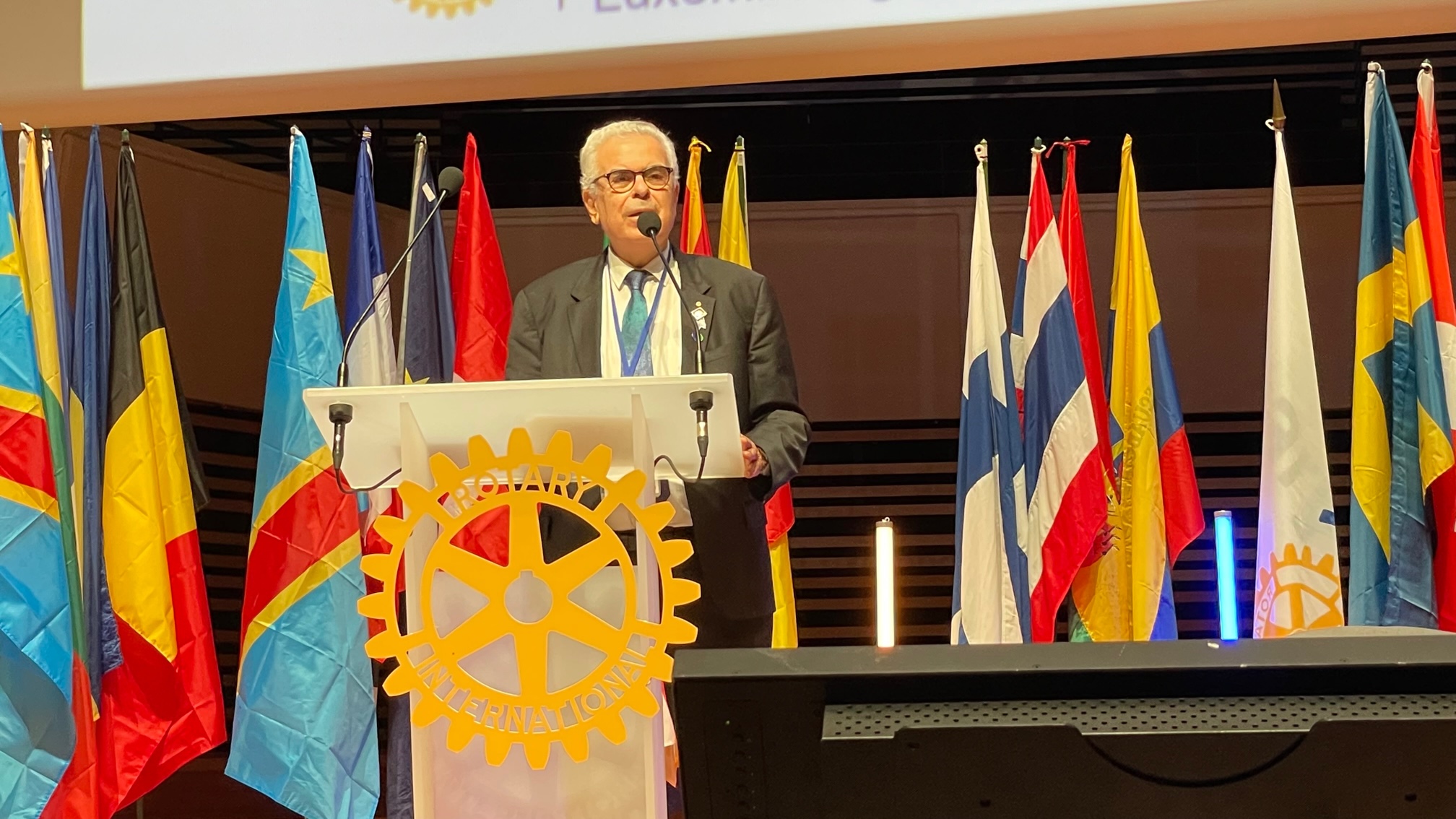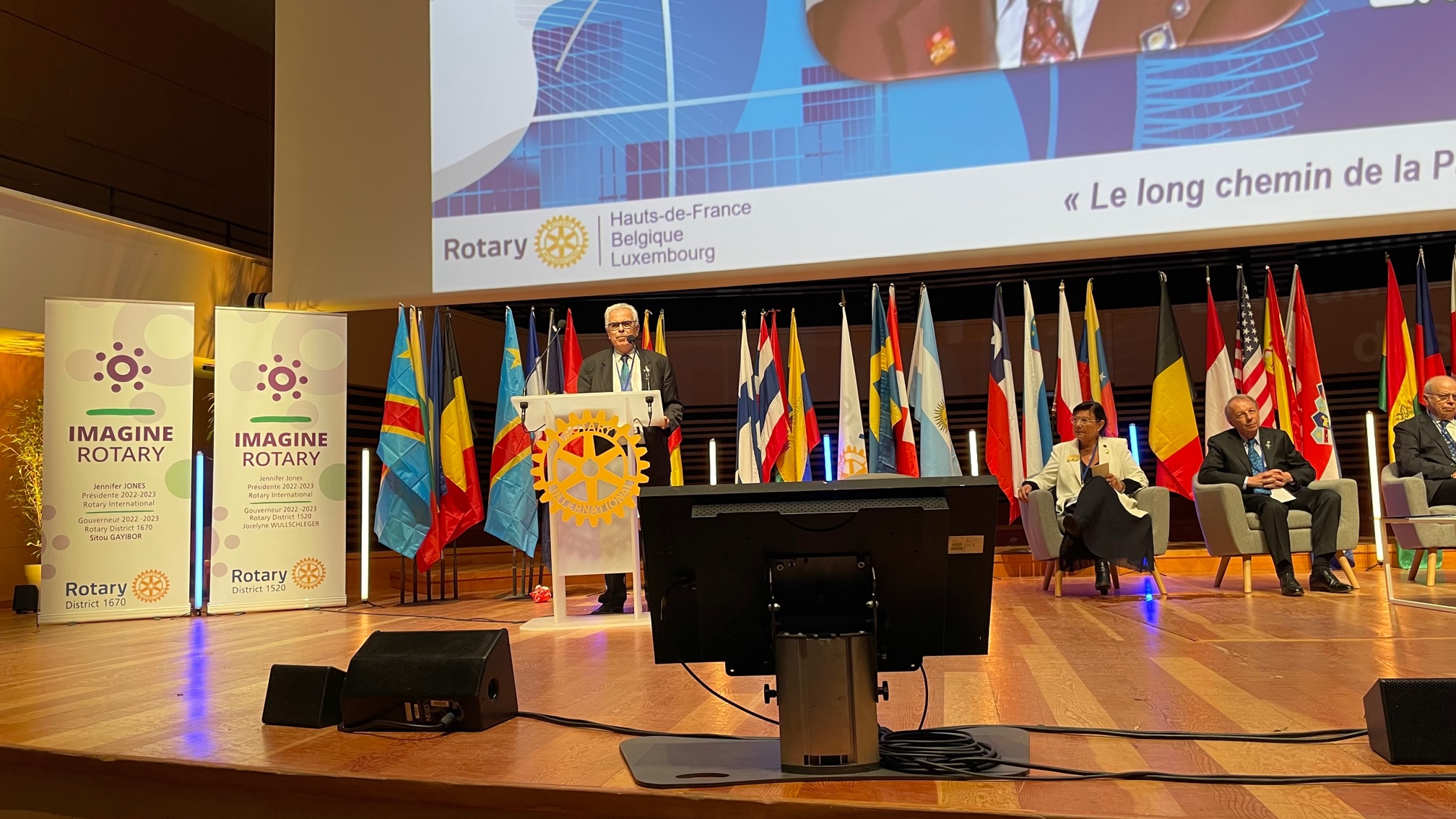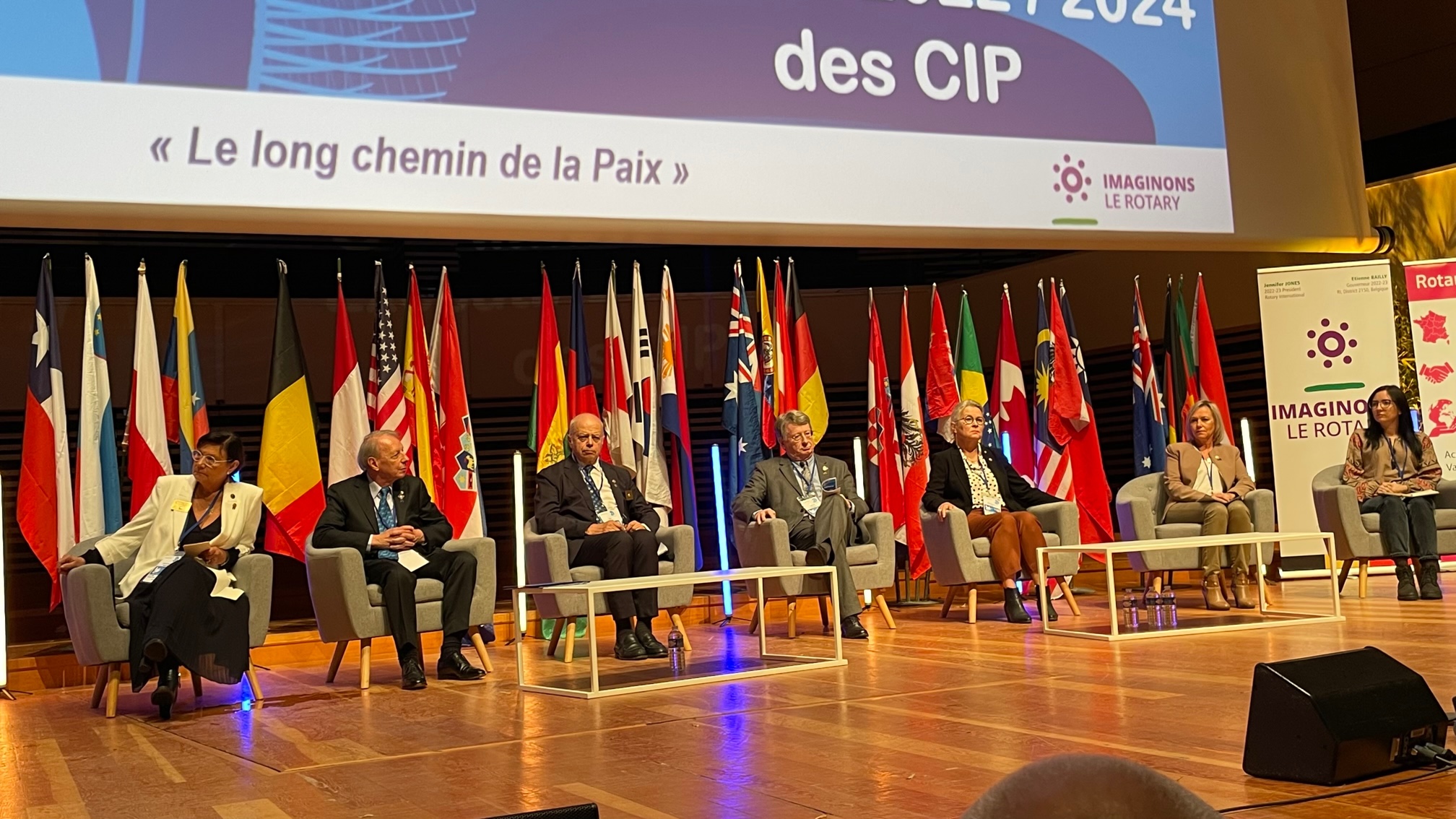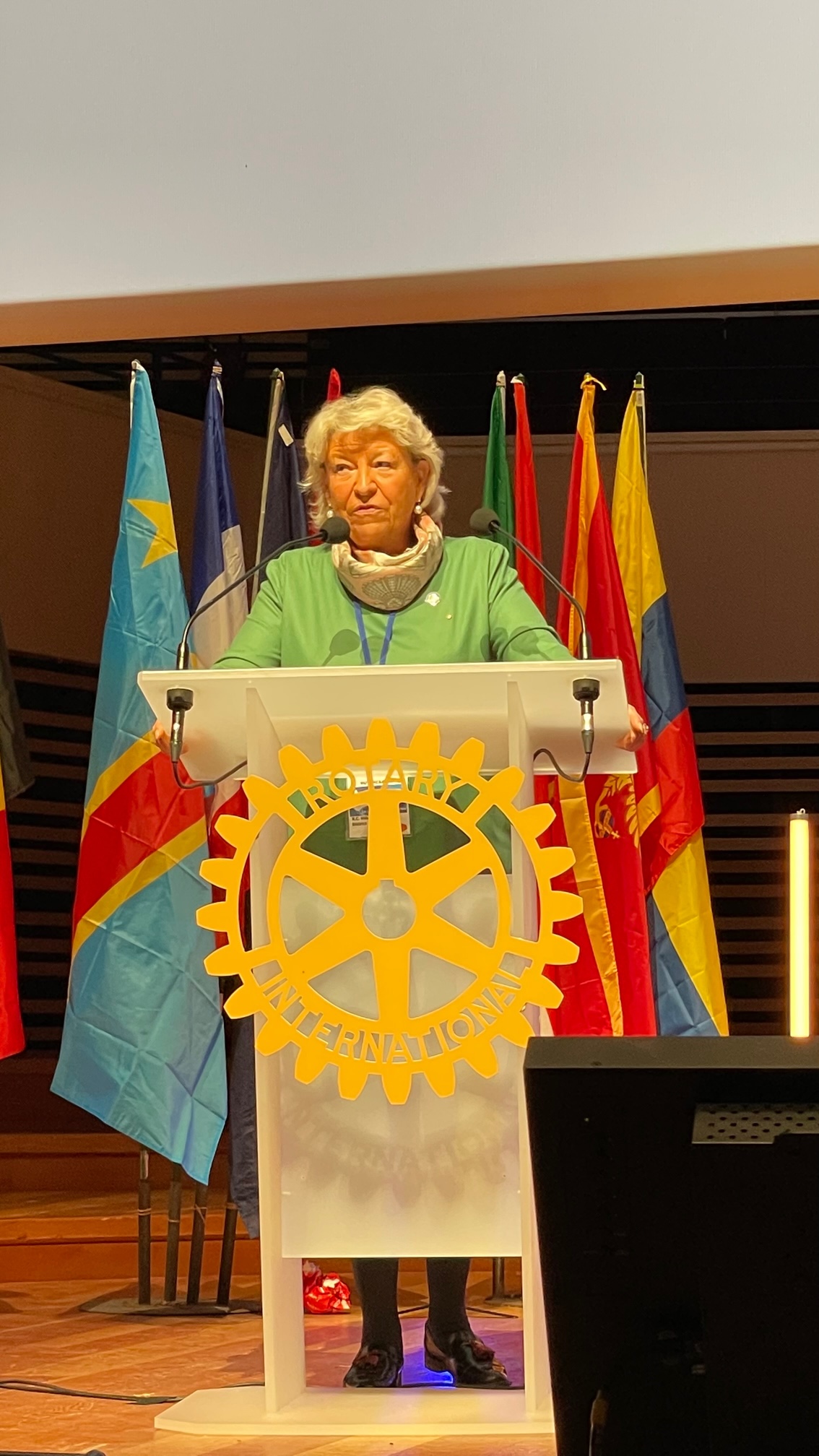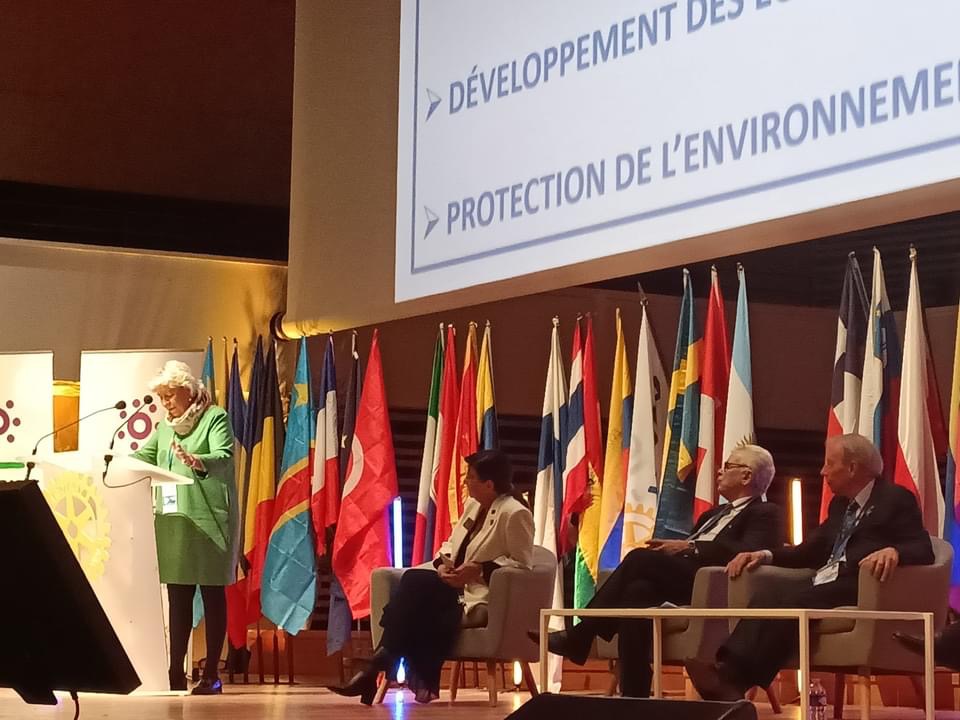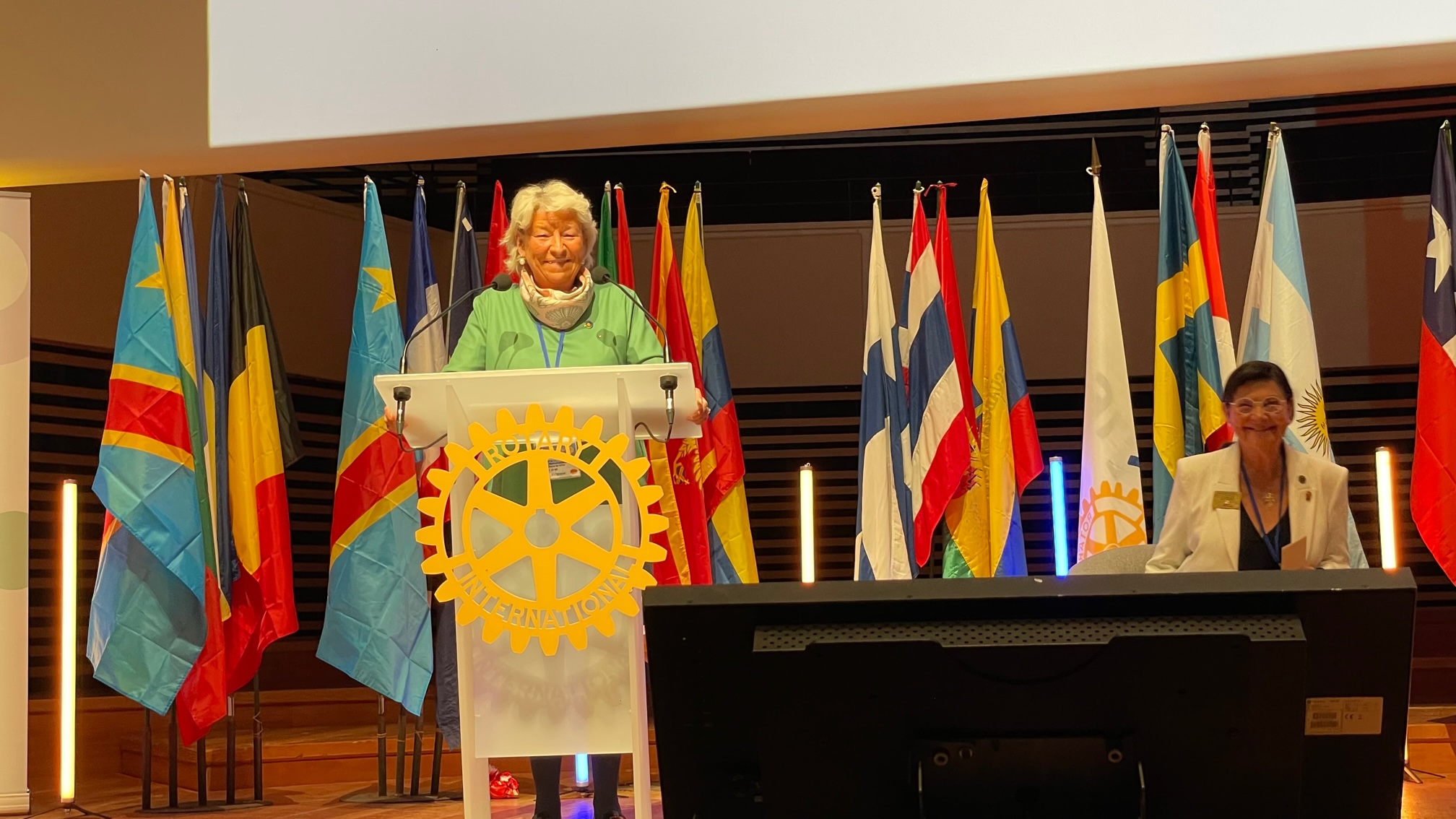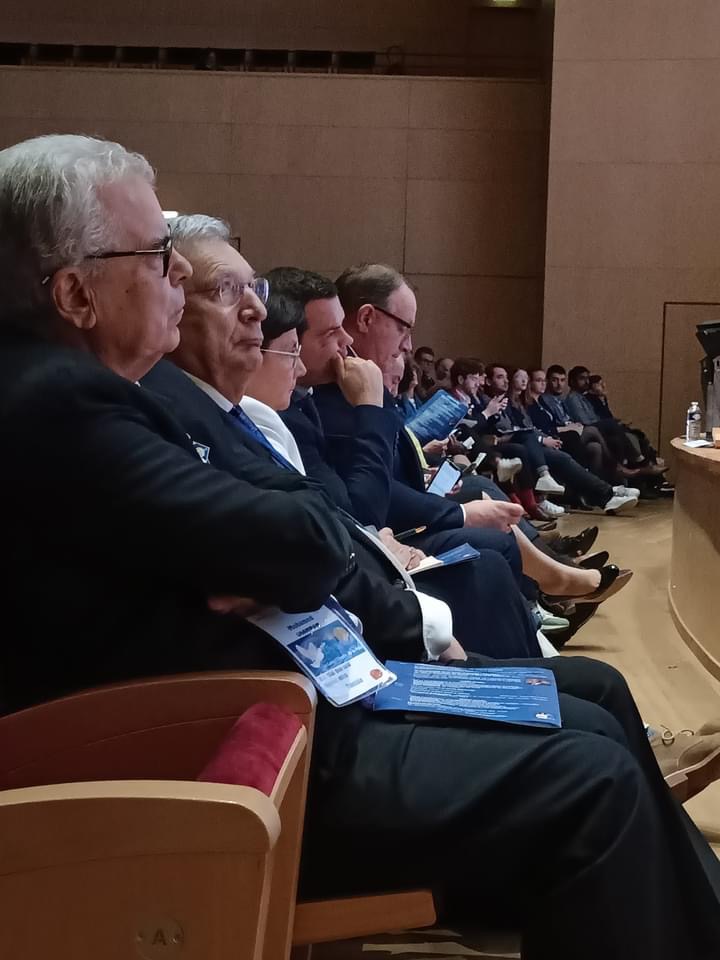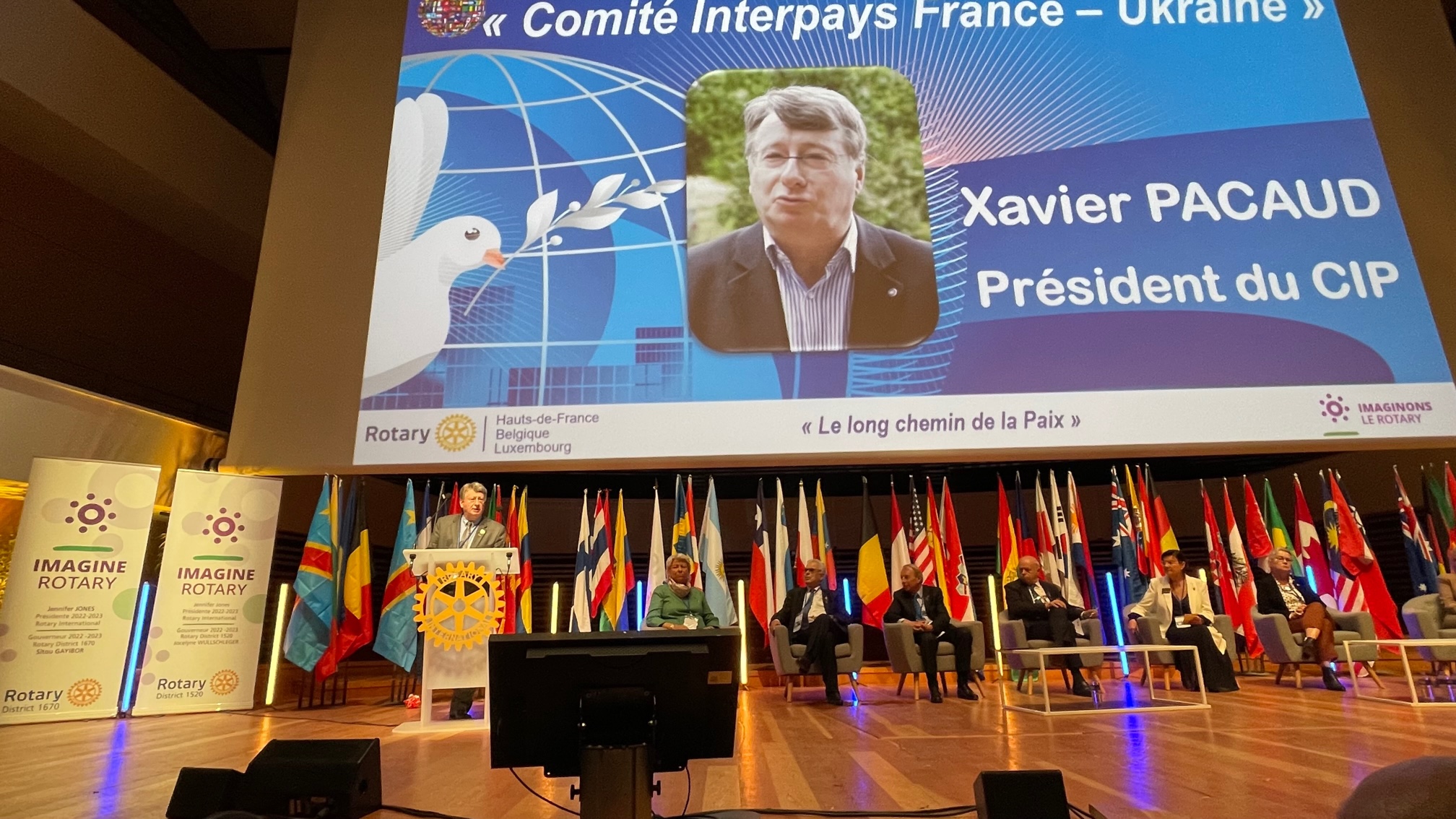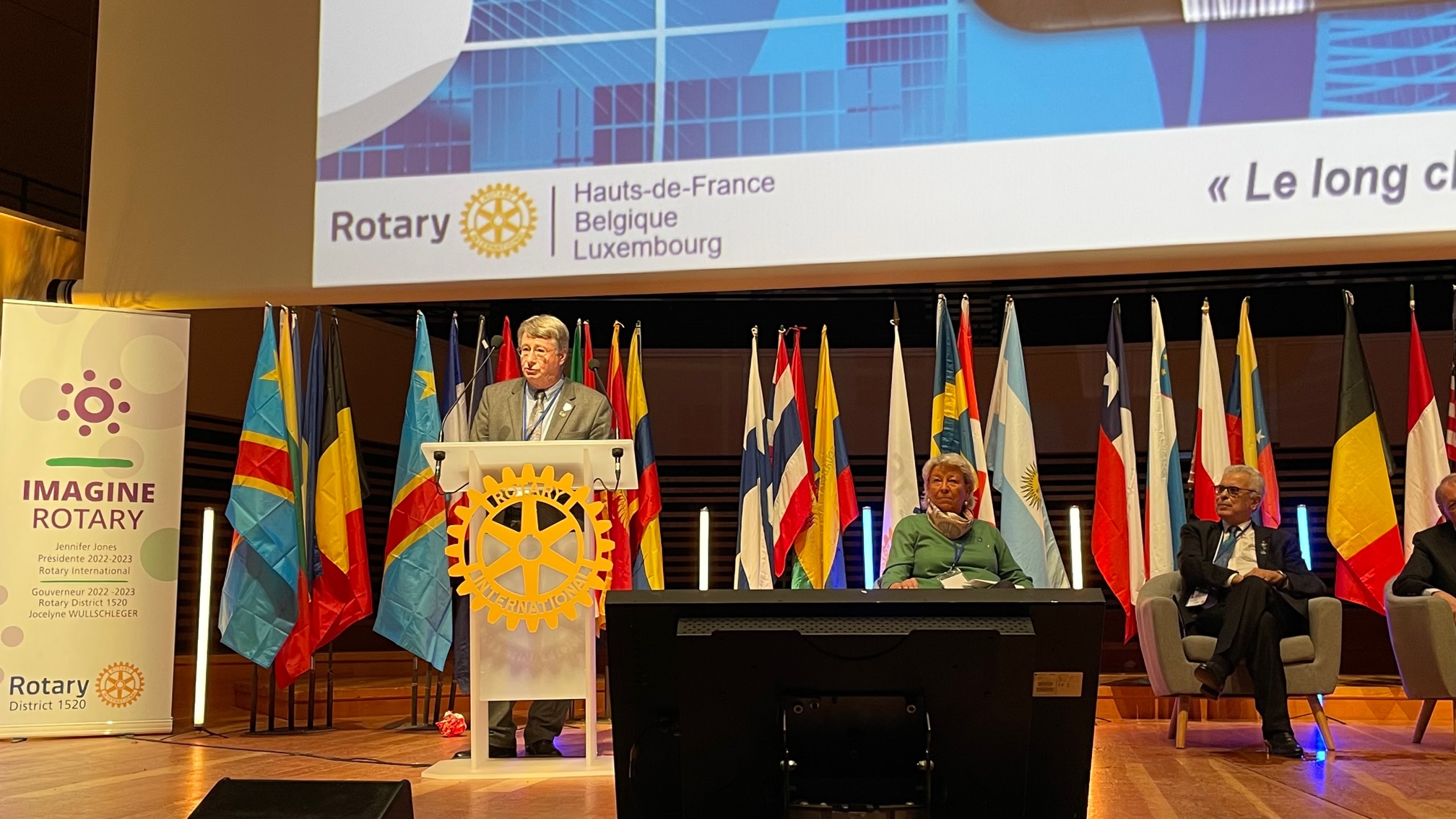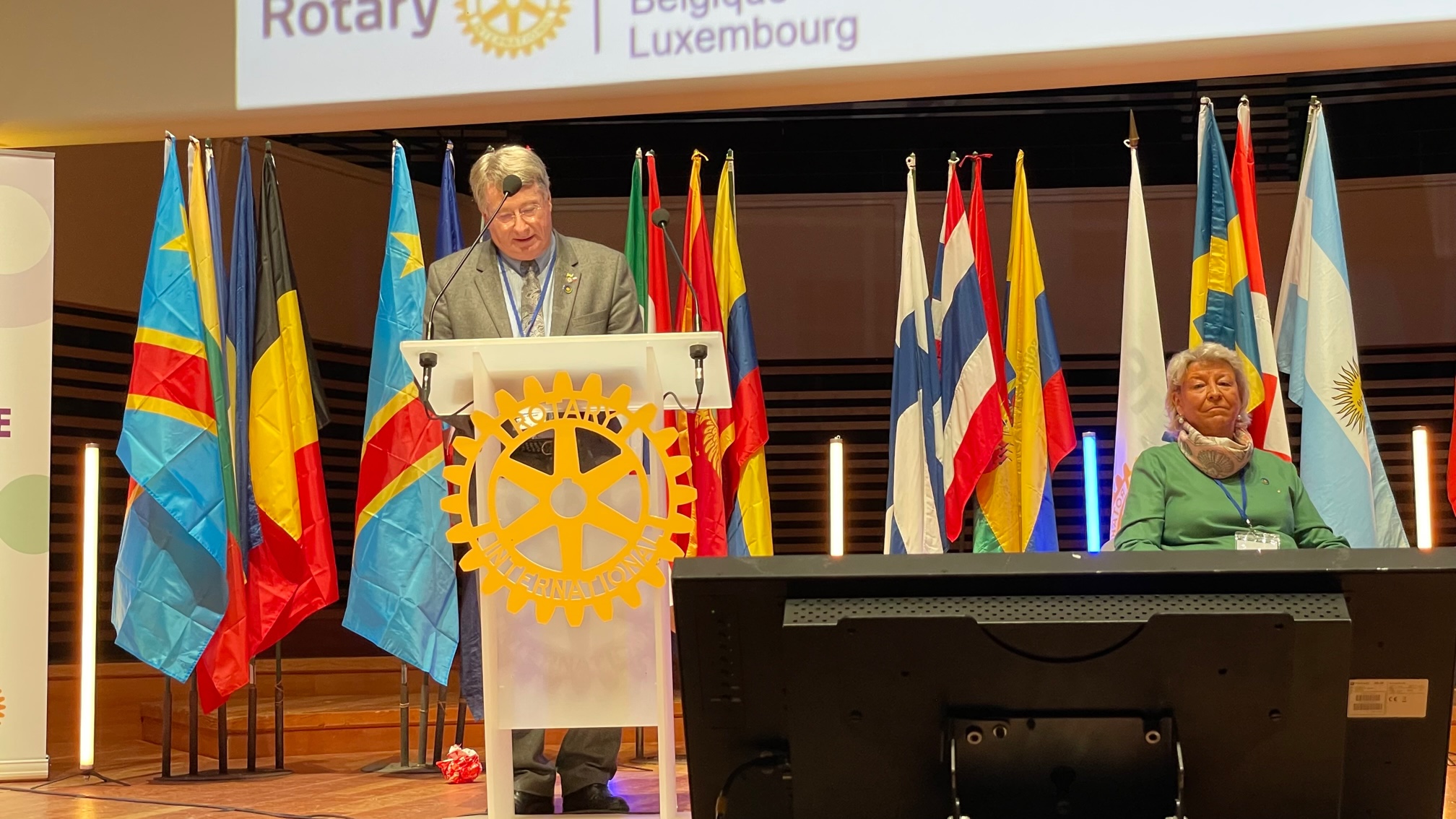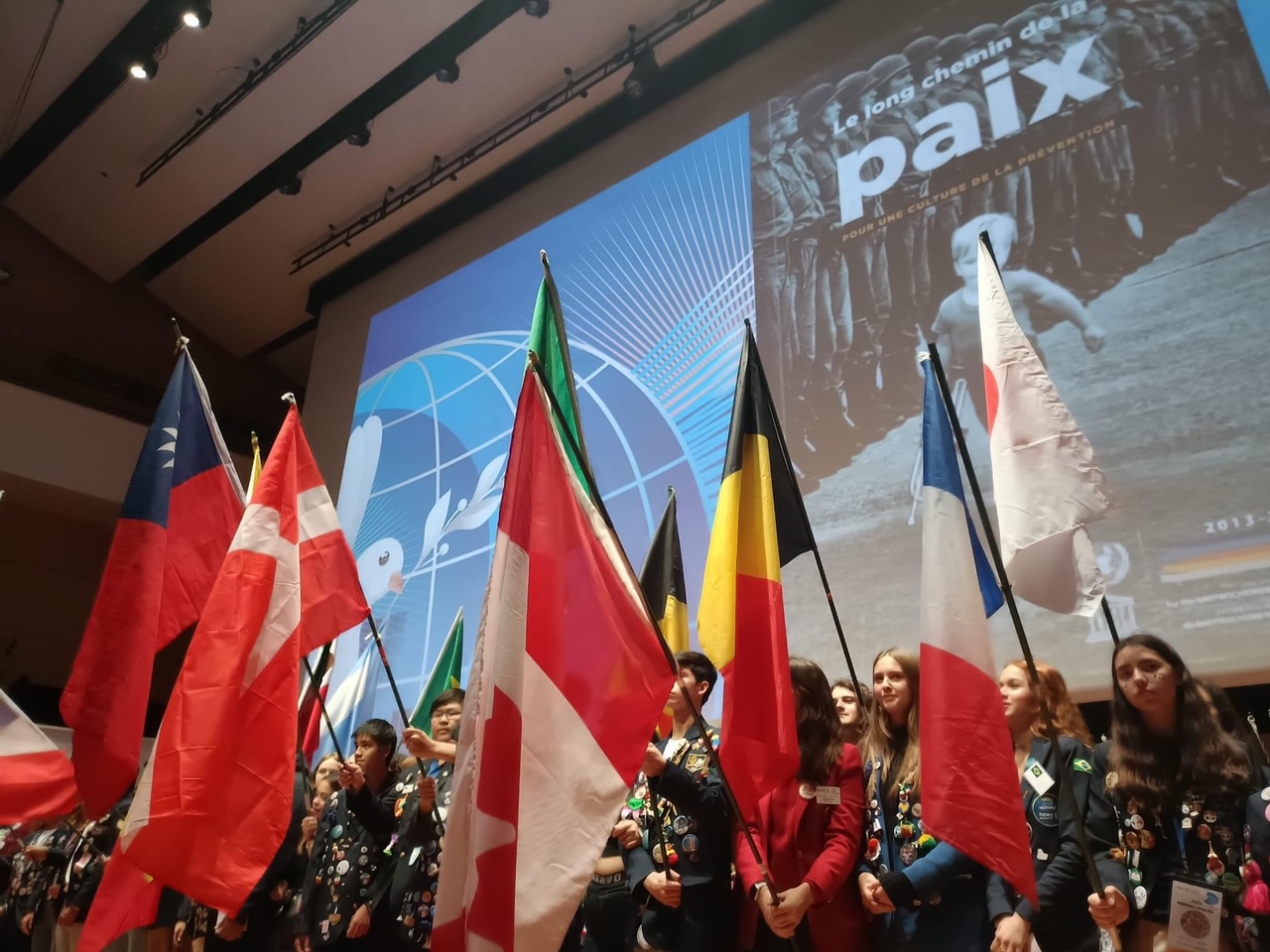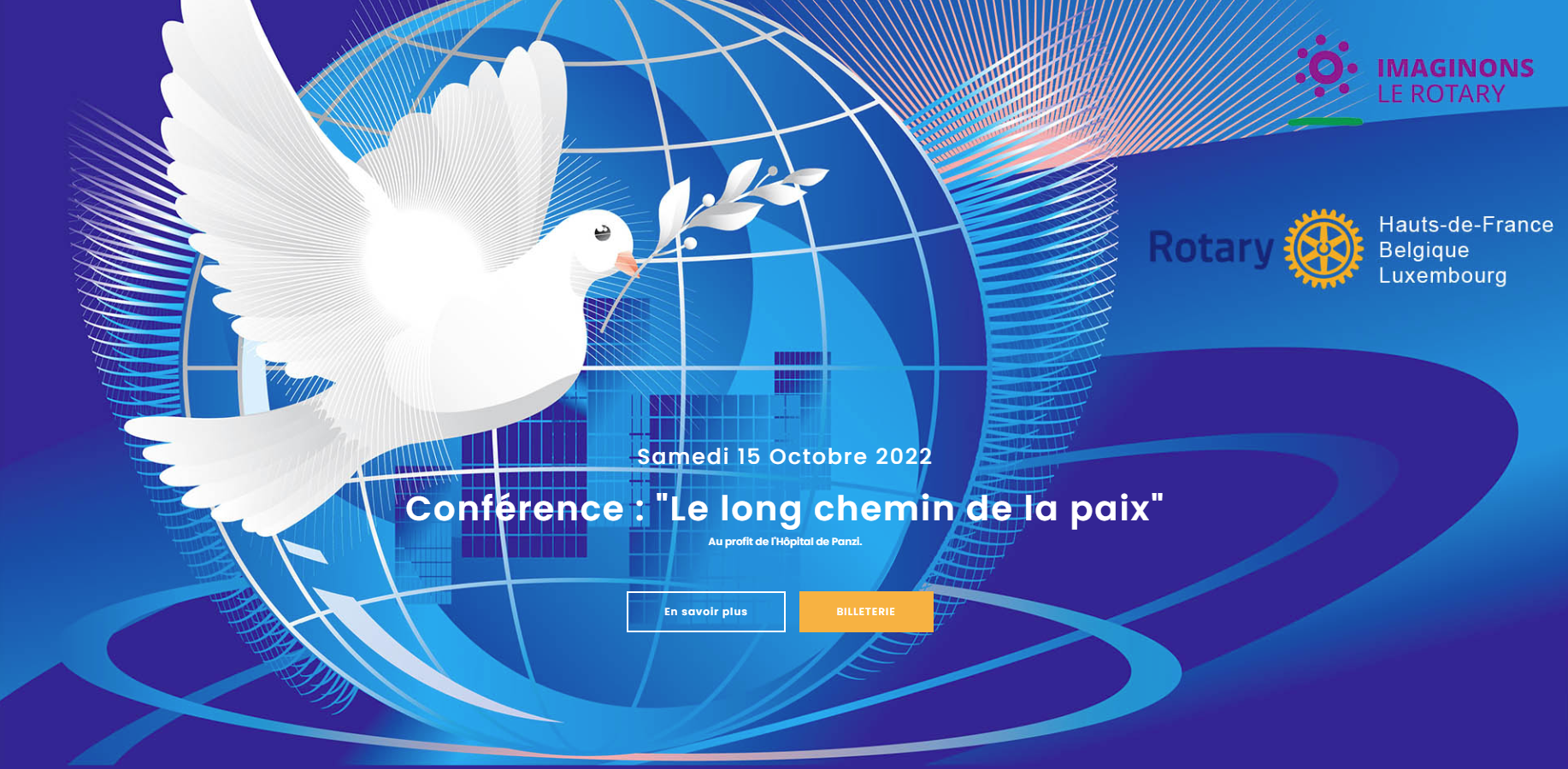Great success of the Lille (France) conference: “The long road to peace” of October 15, 2022.
Organized by the 2 districts of Hauts-de-France and two Belgian and Luxembourg districts.
1200 enthusiastic participants.
Two Nobel Peace Prize: Mrs BOUCHAMAOUI 2015 and Dr MUKWEGE 2018.
Rotary’s Inter-Country Committees with Ukraine and Russia.
Civil society, international institutions and Rotary.
To build peace by strengthening the influence of Rotary and that of international institutions.
By relying on the strength of women and the impetus of youth.
By achieving the United Nations Sustainable Development Goals.
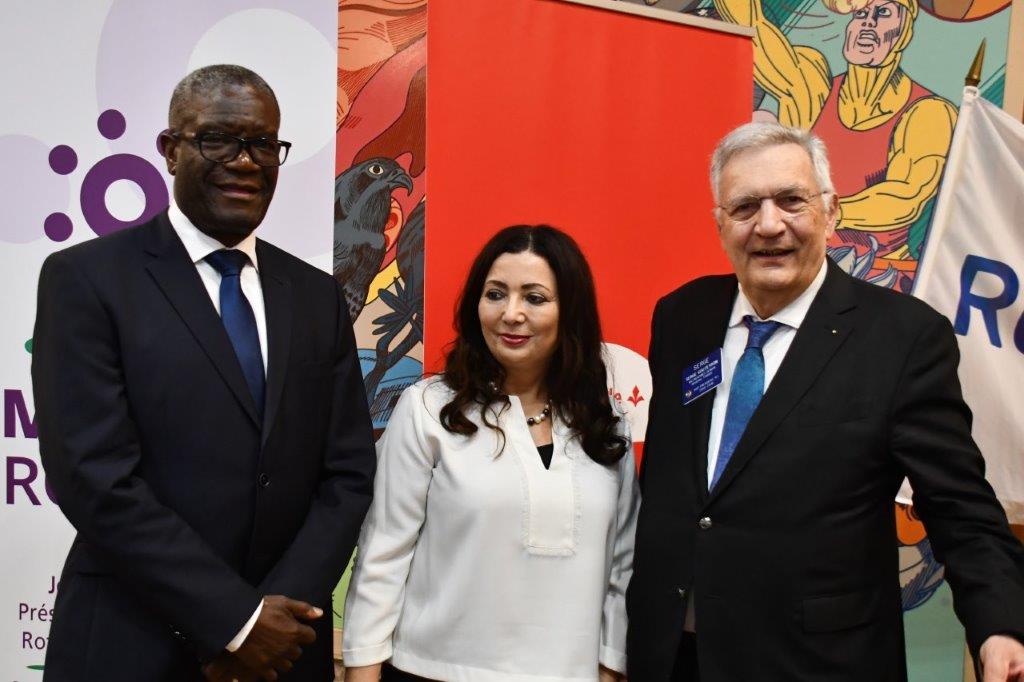
From left: Denis Mukwege, Nobel Peace Prize 2018, Ouided Bouchamaoui, Nobel Peace Prize 2015, Serge Gouteyron, ICC Executive Council Honorary Chairman
* * *
Inter-Country Committees
Rotary’s first program dedicated to peace
In 1950, in Strasbourg, German and French Rotarians created the first Inter-Country Committee.
Understanding each other, renewing friendly relations after two world wars, and moving forward together to build peace in Europe, these were their motivations.
1950 is not neutral.
The UN and UNESCO themselves had just been created. The UN to « to save succeeding generations from the scourge of war » and UNESCO to construct in the minds of men « the defenses of peace ».
2 organizations for which the Rotary International and the Rotarians are qualities took an active part:
- In the drafting of the United Nations Charter in 1945 in San Francisco
- In the conference of Ministers of Education in 1942 in London: the one that will decide on the creation of UNESCO.
Moreover, Rotary will organize each year at the UN in New York, the « Rotary Day », interrupted during the Cold War but resumed since 1985 without interruption; supplemented in recent years by « Rotary Day » at UNESCO.
Thinking and acting for peace very quickly led to other Inter-Country Committees flourishing while the governments of the six founding countries drew the outlines of the future Europe.
The Rotarian Inter-Country meetings will soon extend to French-speaking African countries and the Middle East, then South America, helping to strengthen a cultural and humanist arc in line with their aspirations for emancipation and progress.
Every year until 1988, the general assembly of the Inter-Country Committees will be held in Strasbourg at the Council of Europe. The Presidents of RI will very often be present or represented, as will the senior leaders of the European community.
The fall of the Berlin Wall in 1989 opens up a new vocation for the committees in which they will be particularly dynamic: the rebirth and expansion of Rotary in Central and Eastern Europe.
Rotary and the newly created Inter-Country Committees are for these new Rotarians the embodiment of newfound freedom and friendship across borders.
The international meetings of the committees are multiplying although Rotary has stopped their funding:
– in Montpellier in 1992, in Lille in 2001, in Antibes Juan les Pins in 2003 – Presidential Conference – in Istanbul in 2007, in Cannes in 2008 « The peace is possible » , all in the presence of the President of RI
– at the Conventions of Birmingham in 2009 and Montreal in 2010 and in European institutes.
In 2007, an American association « Friends of Russia » became a United States / Russia Inter-Country Committee. It receives its charter in Evanston, which will subsequently promote the establishment of committees in the United States.
The organization and procedures specific to the Inter-Country Committees: the two sections and their governance, the National Coordinator were approved in 2007 by the Rotary Board of Directors. The Executive Council is thus vested with international promotion and relations with RI headquarters.
Then it will be Bucharest in 2008, Tunis in 2009, Strasbourg in 2010, Berlin in 2011 and UNESCO in 2015.
Until the Taipei pre-convention in 2021 (virtual meeting for Covid cause) entirely devoted to the committees and their service opportunities, a landmark first in their history.
Asian countries have adopted the concept and created an India/Pakistan committee.
An innovation: Rotarians from 7 Southeast Asian countries have formed an Inter-Country Committee.
Today there are 500 committees as many embassies of dialogue for peace, apolitical and non-confessional.
With the new century, the search for peace has also evolved. After the notion « culture of peace », UN and UNESCO advocate the « peace sustainability » and the « positive peace ».
Rotary International contributes to the positive peace through its vision of the world, through the 7 causes it defends, its Inter-Country Committees, its network of Representatives to international institutions, its Exchange programs for young people, its Scholarships, its Centers for Peace, its Friendships of action.
For the International Institutions, the ambition to transform the world remains possible through the implementation of the major development plan of the United Nations: the objectives of sustainable development. An integrating model which identifies the modalities and conditions prior to the establishment of peace
Success contingent on firm commitments and a ‘society/government’ global civil cooperation initiative.
Until then, the Inter-Country Committees will continue to build bridges of friendship, to open the diplomatic channel for aid, understanding and dialogue in conflict zones, to share their concerns for loyalty and fairness in human relations, and to act in social responsibility.
Moving forward with other goodwill on the « long road to peace ».
Serge Gouteyron
Past Rotary International Vice President
Chairman of the Inter-Country Committees 2007/2010 – Honorary Chairman
– – – – – Translation into French – – – – –
Gros succès de la conférence de Lille (France) : “Le long chemin de la paix” du 15 octobre 2022 .
1200 participants enthousiastes .
Deux prix Nobel de la Paix : Mme BOUCHAMAOUI 2015 et le Dr MUKWEGE 2018.
Les comités inter pays du Rotary avec l’Ukraine et la Russie .
La société civile, les institutions internationales et le Rotary .
Construire la paix en renforçant l’influence du Rotary et celle des institutions internationales .
En s’appuyant sur la force des femmes et l’impulsion de la jeunesse .
En réalisant les objectifs des Nations Unies pour le développement durable .
* * *
Les comités interpays
Le premier programme du Rotary dédié à la paix
En 1950, à Strasbourg, les rotariens allemands et français créent le 1er comité interpays .
Se comprendre, renouer des relations amicales après 2 guerres mondiales, et avancer ensemble pour construire la paix en Europe, telles étaient leurs motivations.
1950 n’est pas neutre.
L’ONU et l’Unesco venaient elles-mêmes d’être créées. L’ONU pour « préserver les générations futures du fléau de la guerre » et l’Unesco pour « élever dans l’esprit des hommes les défenses de la paix ».
2 organisations pour lesquelles le Rotary International et les rotariens es qualités prirent une part active:
- Dans la rédaction de la charte des Nations Unies en 1945 à San Francisco
- Dans la conférence des Ministres de l’Education en 1942 à Londres: celle qui décidera de la création de l’Unesco.
D’ailleurs le Rotary organisera chaque année à l’ONU à New York, « la journée du Rotary » interrompue pendant la guerre froide mais reprise depuis 1985 sans discontinuer ; complétée ces dernières années par des « Rotary Day » à l’Unesco.
Penser et agir pour la paix fait que très vite, d’autres comités interpays fleurissent tandis que les gouvernements des 6 pays fondateurs dessinaient les contours de la future Europe.
Les rencontres rotariennes interpays s’étendront bientôt à l’Afrique francophone et au Proche Orient puis ce sera l’Amérique du Sud contribuant à renforcer un arc culturel et humaniste en lien avec leurs aspirations d’émancipation et de progrès.
Chaque année jusqu’en 1988, l’assemblée générale des comités interpays se tiendra à Strasbourg au Conseil de l’Europe. Les Présidents du RI seront très souvent présents ou représentés tout comme les hauts dirigeants de la communauté européenne.
La chute du mur de Berlin en 1989 ouvre pour les comités une nouvelle vocation dans laquelle ils vont être particulièrement dynamiques : celle de la renaissance et de l’expansion du Rotary en Europe centrale et orientale.
Le Rotary et les comités interpays, nouvellement créés, étant pour ces nouveaux rotariens l’incarnation de la liberté retrouvée et de l’amitié par-delà les frontières.
Les manifestations internationales des comités se multiplient bien que le Rotary ait arrêté leur financement :
à Montpellier en 1992, à Lille en 2001, à Antibes Juan les Pins en 2003 – conférence présidentielle – à Istanbul en 2007, à Cannes en 2008 « la paix est possible » – toutes en présence du Président du RI –
aux conventions de Birmingham en 2009 et de Montréal en 2010 et dans les instituts européens.
En 2007, une association américaine « les amis de la Russie » se transforme en comité interpays Etats Unis /Russie. Il reçoit sa charte à Evanston, ce qui favorisera par la suite l’implantation des comités aux Etats Unis.
L’organisation et les procédures propres aux comités interpays : les 2 sections et leur gouvernance, le coordinateur national sont approuvées en 2007 par le Conseil d’Administration du Rotary. Le Conseil Exécutif est ainsi investi de la promotion internationale et des relations avec le siège du RI.
Puis ce sera Bucarest en 2008, Tunis en 2009, Strasbourg en 2010, Berlin en 2011 et l’Unesco en 2015.
Jusqu’à la pré convention de Taïpei en 2021 (virtuelle cause covid) entièrement consacrée aux comités et à leurs opportunités de service, une première dans leur histoire qui fait date.
Les pays d’Asie ont adopté le concept et créé un comité Indes/Pakistan.
Une innovation : les rotariens de 7 pays du sud est asiatique se sont constitués en comité interpays.
Aujourd’hui on compte 500 comités autant d’ambassades de dialogue pour la paix, apolitiques et non confessionnelles.
Avec le nouveau siècle, la recherche de la paix a aussi évolué. Après la notion de « culture de la paix » l’organisation des Nations Unies et l’Unesco prônent « la pérennisation de la paix » et « a paix positive ».
Le Rotary International contribue à la paix positive par sa vision du monde, par les 7 causes qu’il défend, ses comités interpays, son réseau de représentants auprès des Institutions Internationales, ses programmes d’échanges pour les jeunes, ses bourses, ses centres pour la paix, ses amicales d’action.
Pour les Institutions Internationales l’ambition de transformer le monde reste possible à travers la mise en œuvre du grand plan de développement des Nations Unies : les objectifs du développement durable . Un modèle intégrateur qui identifie les modalités et conditions préalables à l’établissement de la paix.
Réussite subordonnée à des engagements fermes et à une initiative de coopération mondiale société civile/gouvernements.
D’ici là les comités interpays continueront à établir des ponts d’amitié, à ouvrir la voie diplomatique de l’aide, de la compréhension et du dialogue dans les zones de conflits, à faire partager leurs soucis de loyauté et d’équité dans les relations humaines, et à agir en responsabilité sociale.
Avançant avec d’autres bonnes volontés sur le « long chemin de la paix ».
Serge Gouteyron
Past Rotary International Vice Président
Président du Conseil Exécutif des comités interpays 2007/2010 – Président d’honneur
* * *
